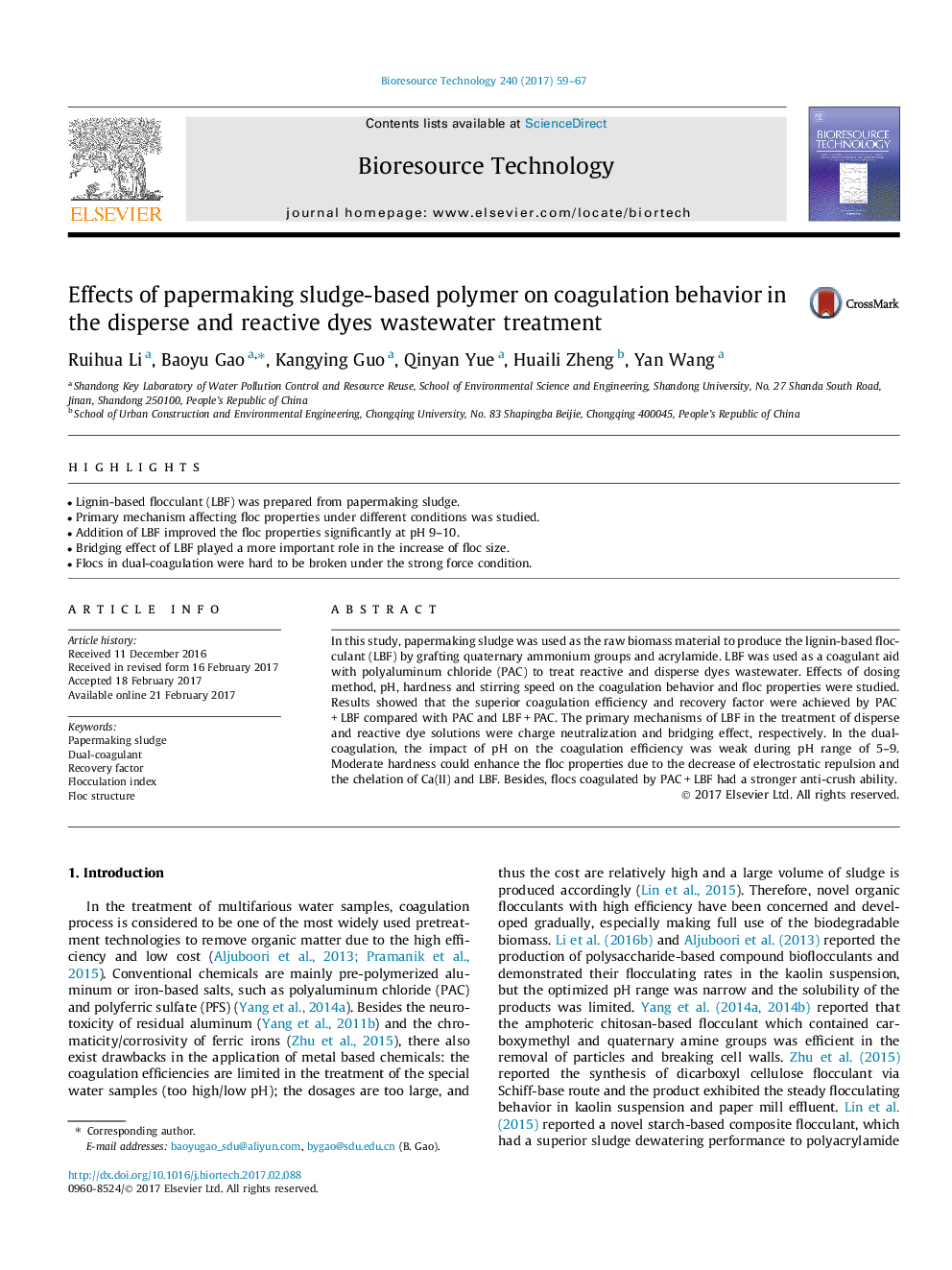| کد مقاله | کد نشریه | سال انتشار | مقاله انگلیسی | نسخه تمام متن |
|---|---|---|---|---|
| 4996725 | 1459903 | 2017 | 9 صفحه PDF | دانلود رایگان |
- Lignin-based flocculant (LBF) was prepared from papermaking sludge.
- Primary mechanism affecting floc properties under different conditions was studied.
- Addition of LBF improved the floc properties significantly at pH 9-10.
- Bridging effect of LBF played a more important role in the increase of floc size.
- Flocs in dual-coagulation were hard to be broken under the strong force condition.
In this study, papermaking sludge was used as the raw biomass material to produce the lignin-based flocculant (LBF) by grafting quaternary ammonium groups and acrylamide. LBF was used as a coagulant aid with polyaluminum chloride (PAC) to treat reactive and disperse dyes wastewater. Effects of dosing method, pH, hardness and stirring speed on the coagulation behavior and floc properties were studied. Results showed that the superior coagulation efficiency and recovery factor were achieved by PACÂ +Â LBF compared with PAC and LBFÂ +Â PAC. The primary mechanisms of LBF in the treatment of disperse and reactive dye solutions were charge neutralization and bridging effect, respectively. In the dual-coagulation, the impact of pH on the coagulation efficiency was weak during pH range of 5-9. Moderate hardness could enhance the floc properties due to the decrease of electrostatic repulsion and the chelation of Ca(II) and LBF. Besides, flocs coagulated by PACÂ +Â LBF had a stronger anti-crush ability.
Journal: Bioresource Technology - Volume 240, September 2017, Pages 59-67
